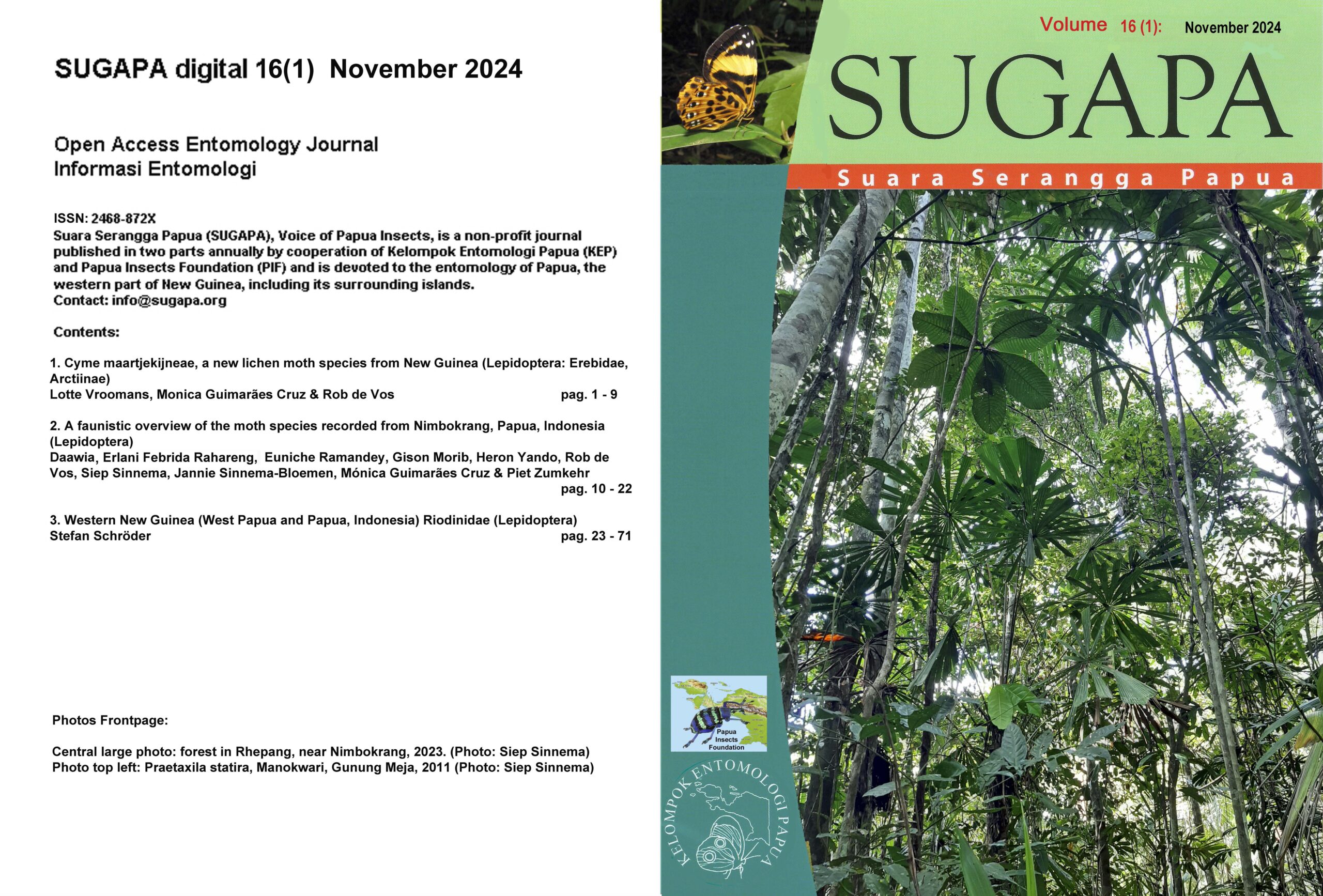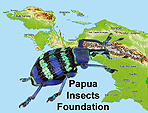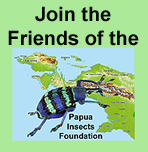5.Edy Rosariyanto
Opportunities and challenges for insect research in Papua
Abstract will follow soon.
Chances and challenges for research at insects in Papua
In July 2006, during the butterfly survey in Serui (Japen), I felt that the cooperation with the present scientists working at dragonflies (Odonata) and beetles (Coleoptera), was very pleasant and created a challenge. By curiosity some questions came up in my mind: How do they collect insects in the field? Do they collect with the same methods like with butterflies? How do they preserve the specimens? What do I pay attention to after I collected the specimens? I understood that different insect orders need different strategies for this, although there are some similarities.Before the cooperation with the scientists I knew only little about research methods and strategies of collecting by reading some books. But by this cooperation and with practice in the field I learned more about this matter than you can ever learn from a book. For example, the working of a so called “pit fall trap” I could only guess from an obscure picture but now I could see it actually work.
Chances.
During the days that I was involved in the workgroup dragonflies, beetles and butterflies, I learned a lot. This new knowledge concerns different items.
At first, the colour of the insects. For example the different species of flies (Diptera) at first seem to have only dark colours of black and blue, but at daytime the variation of colour appears to be a lot wider than only a few differences.
Secondly, there are the sources to feed. Flies, for instance, seem to be attracted by the smell of rotting fish, disgusting for humans, but for flies very delicious.
The third interesting fact is that every species has its own specific distribution. One species only occurs at higher altitudes, the other can only be found in the lowlands, and there are species that are distributed in both. These three facts interest me most and invite me to start research with the students on these subjects, to discover unknown species, to reveal the biodiversity of our nature. Many areas in Papua are still unexplored and form a white spot (“warna putih”); to make inventories of the biodiversity of these areas is necessary. By systematic inventories of more and more areas all these white spots will be explored which results in more expertise in research of biodiversity, like Lokakarya Biodiversitas on Biak in 1997, supported by LIPI, UNCEN, Conservation International and other institutions.
Challenges
It is a fact that someone who wants to do research of biodiversity in Papua needs to specialize. Science cannot be undertaken by dreaming, it needs planning, reading, writing and fieldwork. Will that be sufficient? To my experience, no. What we need is assistance and guiding of scientists and teachers. The influence of the scientists expands our views because of the teaching of their knowledge and expertise. It is for instance easier to identify species with the help of their knowledge than to try it yourself. Another problem we came across in field trips (with exception of Br. Henk van Mastrigt) is the use of the language. The scientists generally use the English language but this is not our mother language. The result may be that there are some miscommunications. But I have hopes that this will also lead to creativity and respect of both parties. A third challenge is literature study. For us, literature is rather inaccessible and mostly in English. Before students start with their field project they need to gather the needed literature and try to translate it. A fourth challenge is the need of support for students to start a scientific study. With some extra help the knowledge of the students can be increased and they will be encouraged to study the unknown.
Finally
The world of
insects is not limited to butterflies alone, but also concerns dragonflies,
beetles, flies, bees, grasshoppers and others. Until now the research methods
are very basic but the butterfly workgroup is refining and learning and the
research at it is developing. Introduction to the biodiversity of other insect
orders will result in more knowledge of the insects of Papua. Who has the
courage to take these chances with all these challenges which are not easy?
Download PDF:

 Open Access Entomology Journal
Open Access Entomology Journal


